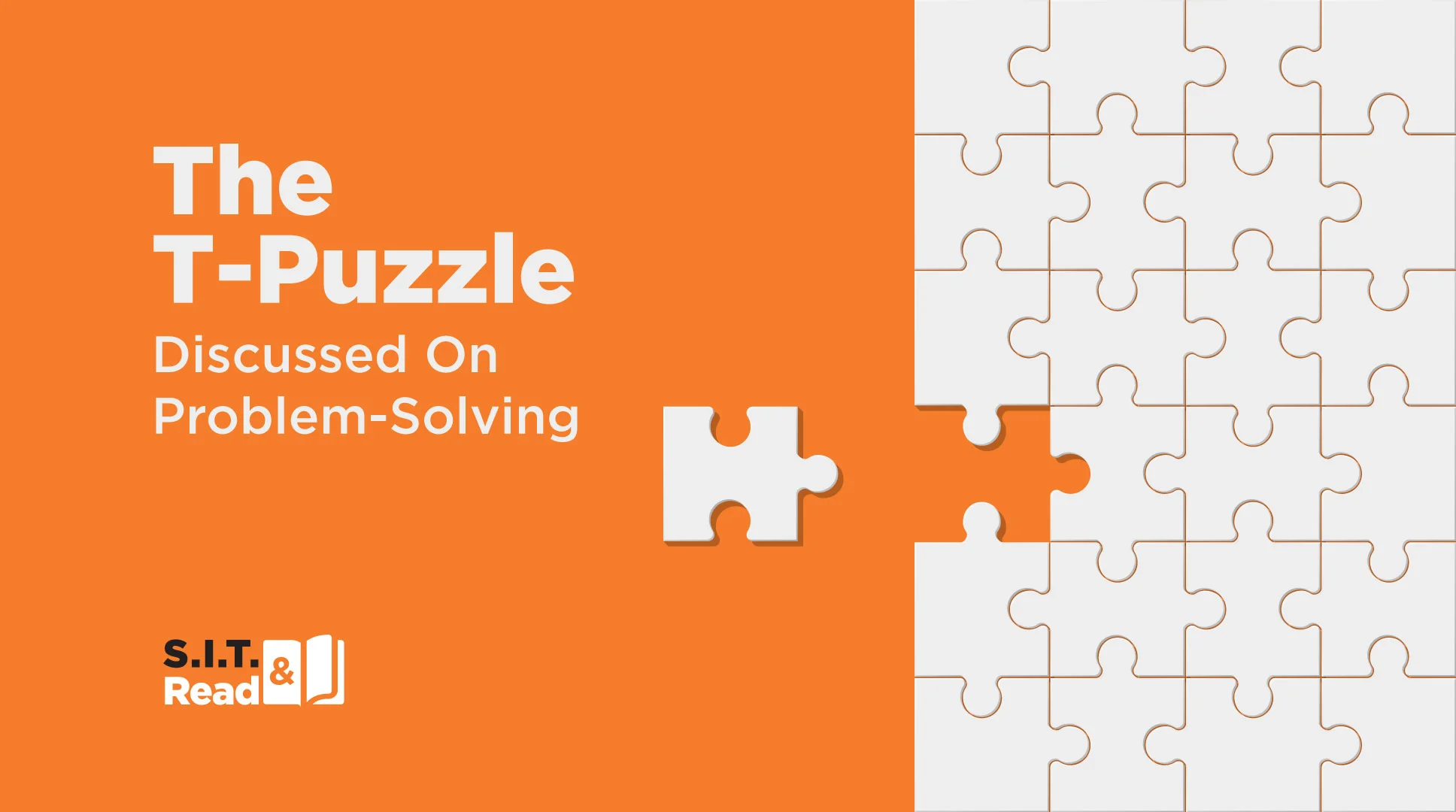The T-Puzzle


This is a puzzle that occurred to me about 30 years ago, inspired by reading Douglas Hofstadter’s collection of essays “Metamagical Themas” https://en.wikipedia.org/wiki/Metamagical_Themas.
My colleagues and I have used it sporadically but extensively in innovation workshops throughout the years. We call it The T-Puzzle. I believe that it raises some interesting questions and thoughts, some more philosophical, others directly related to problem solving and innovation.
But, before discussing meanings and interpretations, would you first take a stab at solving the puzzle?


Have you tried? This is what happens:
Once you realize that the number is 21, you write “twenty one”, but, as you are instructed to count the t’s in the word you fill in as well, the number of t’s now grows to 23. OK, you say to yourself, and write “twenty three”, BUT this brings the count to 24 t’s. Annoying, but still manageable, you think, as you fill in what is now the correct reply “twenty four”. But here it starts getting weird, because NOW the right answer goes back to 23, and you know where writing THAT answer will lead you. So, basically, there is no way (that I’m aware of) to break this wicked loop and write down the correct answer.
UNLESS, that is, you start breaking some IMPLICIT assumptions about the requirements from the solution, while strictly complying with the EXPLICIT instructions themselves. Here are some possible solutions suggested by the public, on LinkedIn and in our workshops:
- Seven plus seven plus seven
- wenny-one or _wen_y one
- fifteen-plus-seven, or other arithmetical combinations
- “several”/”many” or “more than twenty-one”
- “Blackjack winning number”
- Einundzwanzig, עשרים ואחד and the like
Some practical learnings about innovative problem solving:
- Useful problem solving is usually not about breaking rules, but about finding novel solutions WITHIN the constraints, INSIDE THE BOX.
- Once you break the FIXEDNESS, or the mental model of how the solution should supposedly look, a floodgate opens for alternative possibilities.
- Solutions tend to come in “families” that share common PATTERNS. Once you recognize these patterns, you can follow each one to create variations (arithmetic, languages, slang, estimates, metaphors, etc.)
- One can be SYSTEMATIC about solution-searching. For “arithmetic” solutions, say, there aren’t many t-less numbers in the English language: one, four, five, six, seven, nine, zero are the only ones in the first 100 natural numbers (!), still enough to create quite a few combinations equaling 21, and combining them with t-including numbers you can reach other sums without falling into the wicked t-loop.
- Easy to CREATE ALGORITHMS churning out solutions for some patterns (arithmetic, languages), less easy for others (metaphors and slang) but probably not impossible.
Additional, more philosophical musings will be supplied on demand. Meanwhile, happy to hear your thoughts.
Recent Posts
Innovation Behavior
Innovation is a skill, not a gift. Top organizations drive growth by nurturing and investing…
Should you learn TRIZ? – Yes. ….and No.
Are you in the world of problem solving? Is problem solving a skillset you have…
What Lies Ahead in 2024?
5 Data-Driven, Customer-Centric trends we’ve identified This is not just another conventional forecast. Over nearly…
Fork or Chopsticks – Which Innovation Tools Do You Use?
Imagine a chef, who only uses a spoon. Imagine a dentist, who only uses a…
The Moat Mentality: Exploring New Frontiers in Innovation Methodologies
In investing and business strategy, we often speak in terms of moats. Warren Edward Buffett…
Was it a Breakthrough or an Adjacency?
This year, P&G’s Febreze celebrates its silver anniversary as a brand. But not all 25…


